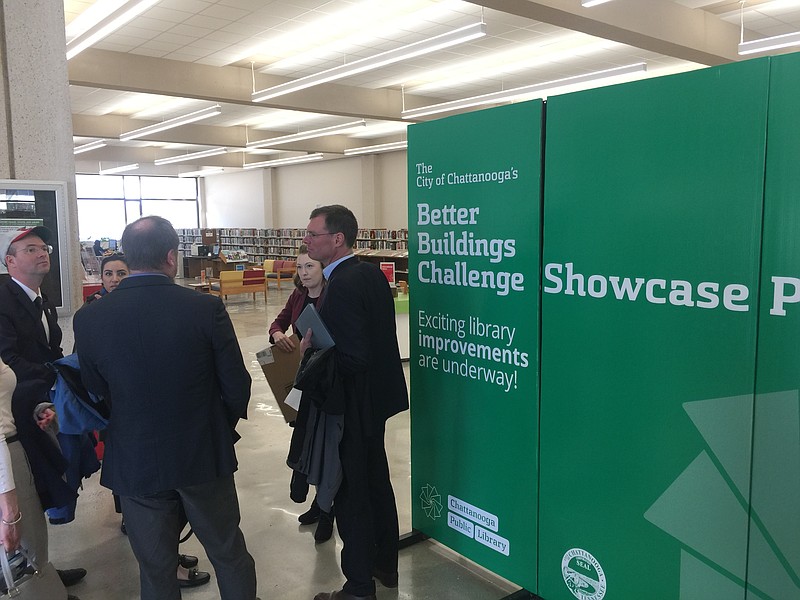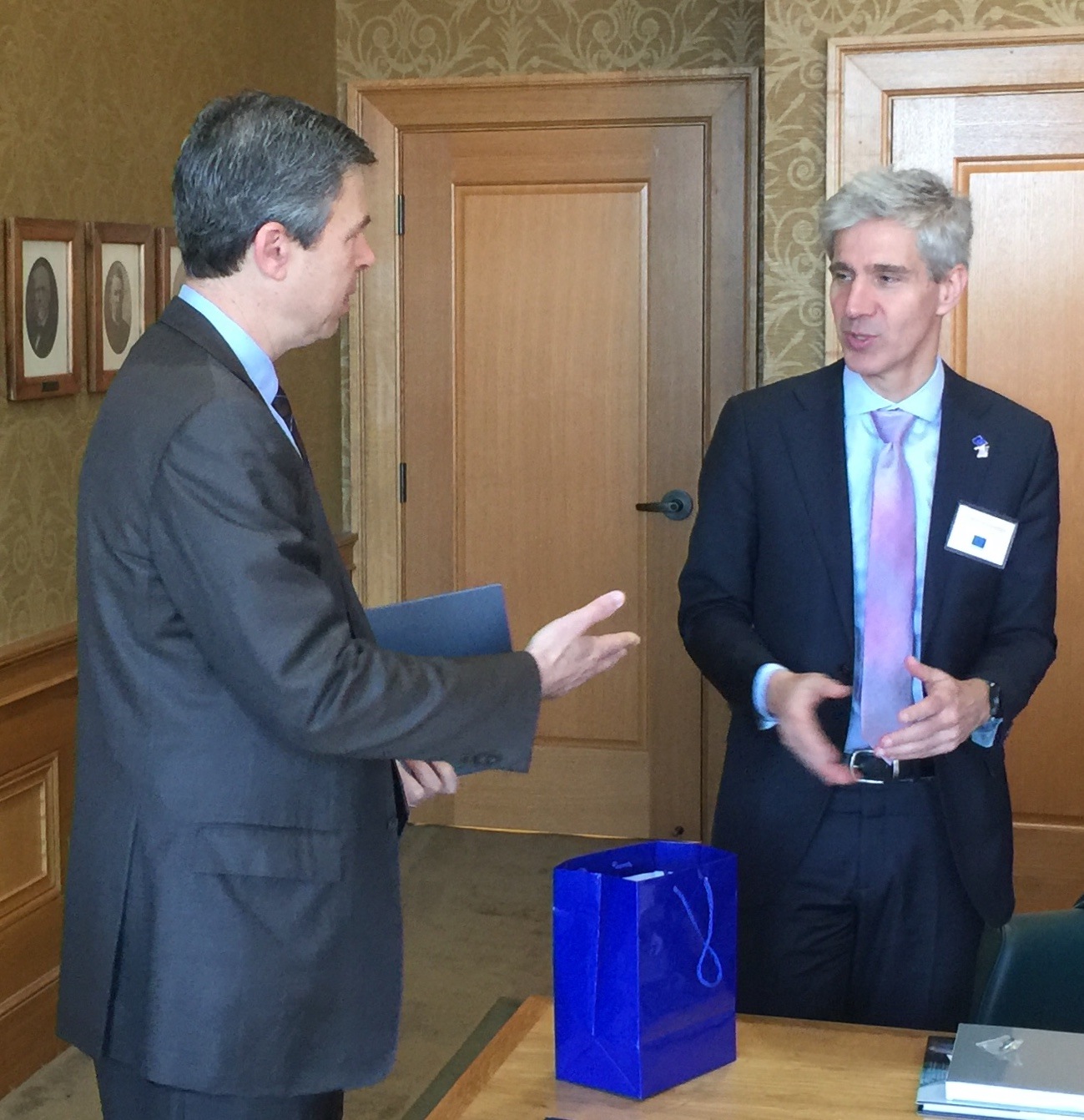Chattanooga is nearly halfway toward meeting its target of cutting its energy consumption by 20 percent by 2025 and the city is continuing to look for ways to improve lighting, heating and cooling within its 200 or so municipal buildings, city officials told a delegation of European Union counselors Thursday.
"We believe that sustainability is the right moral and economic course for our future," Chattanooga Mayor Andy Berke told delegates from eight European countries visiting East Tennessee this week as part of an EU energy study of the region. "The U.S. should be the place that invents, builds and exports the energy solutions for all around the world, and I would love for Chattanooga to a place that is part of that movement."
Berke dismissed skeptics of global climate change as "farcical" and said he hopes Chattanoogans and other Americans can work for solutions to cut carbon emissions and look for greener, cleaner solutions. The Chattanooga mayor, who grew up in Chattanooga and recalls the thick smog that often enveloped the city, said he and many other young people once were eager to leave such a dirty city.
"We are a much different and better city today and we wouldn't be what we are today if we hadn't cleaned up our environment and invested in a cleaner future," said Berke, touting the two time award for Chattanooga by Outdoor magazine as "The Best Town Ever."
The city of Chattanooga is among more than 125 local and state governments - and among more than 900 organizations nationwide - that joined the Department of Energy's Better Buildings Initiative since it was launched under then President Obama seven years ago. These partners represent more than 13 percent of total U.S. commercial building space, and many of the participants have signed up for the Better Buildings Challenge to reduce their energy consumption by 20 percent within 10 years.
Erick Schmidt, director of sustainability for the city of Chattanooga, said Chattanooga actually cut its energy consumption in the past year by 18 percent, but rains and droughts over the past couple of years distorted some of that annual comparison because of the weather impacts on the city 's Moccasin Bend Sewage Treatment Plant which uses about half of the city's total power consumption.
The Public Library, which invested about $1 million in LED lights and is preparing to spend about $1.5 million more on a new heating and air conditioning system, has already cut power use about 8 percent to help lower the $100,000 the library spends each year on electricity. Corrine Hill, the Chattanooga Pubic Library's executive director, said she expects to more than double those savings over the next few years at the 32-year-old facility.
Nationwide, the Department of Energy reported last year that participants in the Better Buildings Challenge are on track to meet their energy reduction goals, saving more than 2 percent each year on average, and $1.9 billion since the start of the program.
Chattanooga's municipal buildings with about 2 million square feet of space use about 250 million kilowatt hours per year of electricity. The city is trying to cut annual demand by about 50 million kilowatt hours by 2025.
Contact Dave Flessner at dflessner@timesfreepress.com or at 757-6340.

